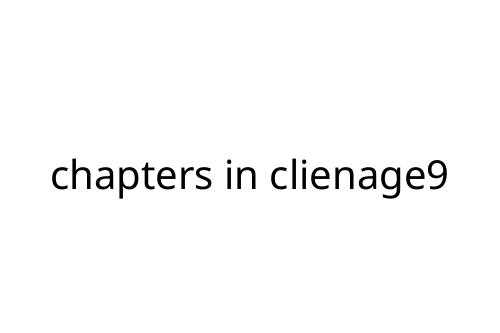chapters in clienage9
If you’ve stumbled on the topic of “chapters in clienage9,” you’re likely curious what it means, how it works, and why it matters—especially if you’re involved with documentation, software development, or academic writing. The term isn’t immediately familiar to everyone, but the concept is straightforward once we break it down.
What Are Chapters in Clienage9?
At its core, “chapters in clienage9” refers to the structural segmentation within the Clienage9 system. Clienage9 is a documentation framework or platform that organizes content into clearly defined chapters, much like chapters in a book. This organizational method improves content readability, navigation, and maintenance—critical traits for any robust knowledge base or documentation set.
Why Divide Content into Chapters?
Splitting material into chapters isn’t new, but Clienage9 takes this approach seriously. Here’s why it’s beneficial:
- Clarity: Breaking down complex subjects into logical sections helps users understand information, step by step.
- Navigation: Chapters allow for quick jumps between related but distinct topics, reducing the need to scroll endlessly.
- Maintenance: Updating one chapter rarely disrupts others. This compartmentalizes edits, making long-term management easier.
Setting Up Chapters in Clienage9
Configuring chapters in Clienage9 is a straightforward process but understanding best practices is key. Here’s how you might approach it:
- Start with a Plan: Map out your material. List the main topics and decide what makes each a suitable chapter.
- Use Clear Headings: Strong headings help the reader know where they are and what to expect.
- Maintain Consistency: Each chapter should follow a similar structure—introduction, explanation, practical tips, or examples.
Chienage9 often supports markdown or similar lightweight syntax, making formatting efficient. Learn the platform’s specific requirements to avoid errors that might break navigation or display.
Pros and Cons of Chapter-Based Structure
Pros
- Improved User Experience: Easier for users to search, skim, and find the information they need.
- Focused Content: Authors can drill deep into specific topics without diluting focus.
- Simplifies Collaboration: Multiple writers can work on different chapters independently.
Cons
- Potential for Fragmentation: Too many short chapters can overwhelm or confuse readers.
- Risk of Repetition: Content overlap might occur if chapters aren’t well coordinated.
- Initial Setup Time: Organizing and planning chapters requires up-front effort, though it pays off later.
Practical Tips for Effective Chapters in Clienage9
- Outline First: Don’t write on the fly. Create an outline that divides content thoughtfully.
- Cross-Reference: Use links between chapters for related content. This makes your material more cohesive.
- Keep Chapters Balanced: Avoid massive chapters or splitting topics too thinly.
- Review Regularly: Periodically revisit your chapters to update, combine, or split as content evolves.
Final Thoughts
Chapters in Clienage9 play a critical role in turning unwieldy information into an organized, user-friendly resource. Whether you’re documenting software, archiving research, or building a knowledge base, understanding and leveraging chapters will improve both reader experience and content management. Take the time to plan thoughtfully, and your documentation will thank you.

